Day of the Dead: A Mexican Ritual for Connection
Finding social health inspiration in Oaxaca, Mexico
Last year, my husband and I planned a trip to Oaxaca, Mexico, to experience Día de los Muertos—Day of the Dead. This annual holiday is dedicated to honoring loved ones who have passed away and takes place over a week, with the main festivities on November 1 and 2 (today!). I had been looking forward to this trip for months.
Then something happened I could not have predicted—something that made the trip surreal and much more meaningful. The week before we arrived in Oaxaca, my dad died.
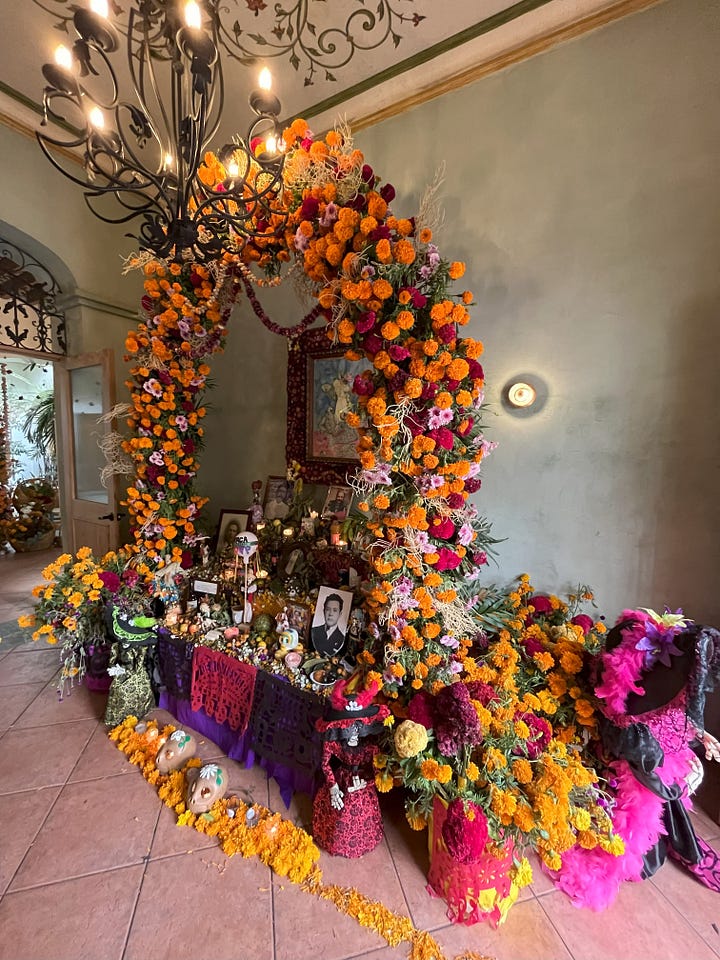
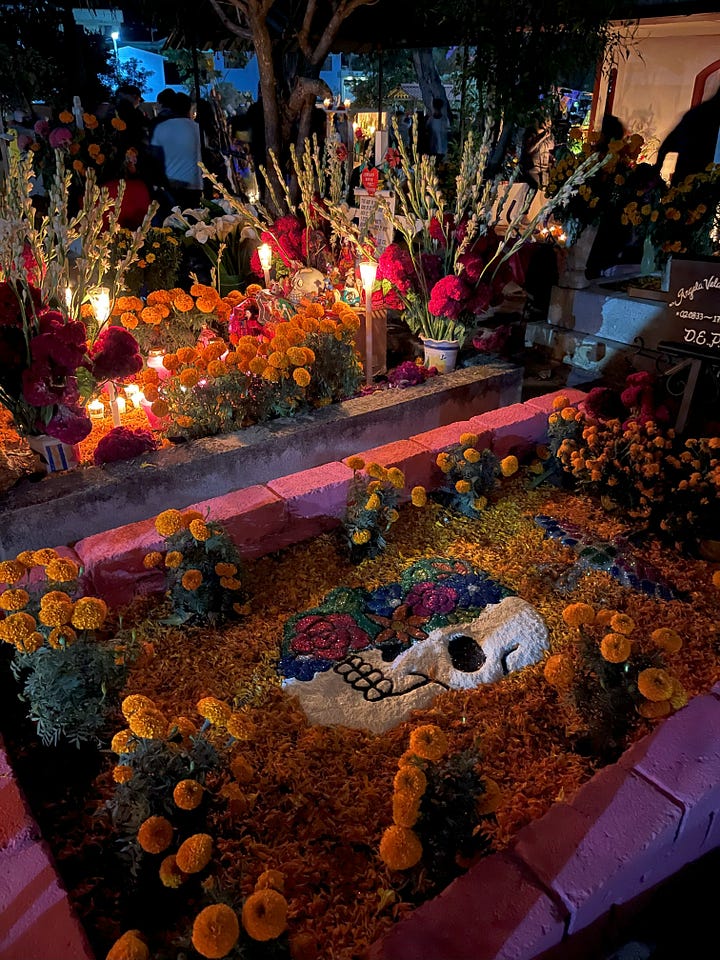
Growing up in North America, the norms I learned for dealing with death were shrouded in sadness: someone passes away and you go to their funeral dressed in black. After the appropriate grief period, you are expected to move on—or continue mourning in private.
Day of the Dead upends this notion. Every year people celebrate those who have died. At night, they gather in the cemeteries to decorate tombstones, play live music, and spend time with family. They dress up in elaborate costumes and parade through the streets under vibrant banners and flowered arches. In their homes, they set up ofrendas—altars—to welcome back the spirits of the deceased, laying out marigolds, candles, sugar skulls, sweet breads, and photos of those who have died.
On one of the days, we spent time with a local family in the countryside, cooking mole negro from scratch, grinding cacao on a stone slab to make chocolate de agua, sipping mezcal distilled at a nearby agave farm. Fittingly, I was tasked with decorating the altar; the act of placing each fruit, each nut, each flower and candle and photo—including one of my dad—soothed me. After night had fallen and our bellies were full, we burned incense and exchanged stories of our loved ones.
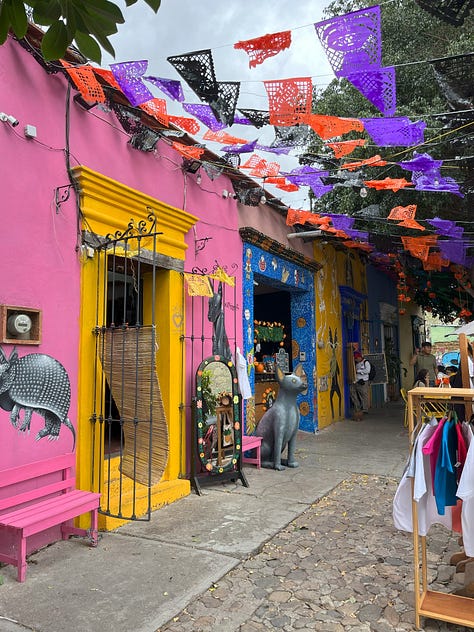
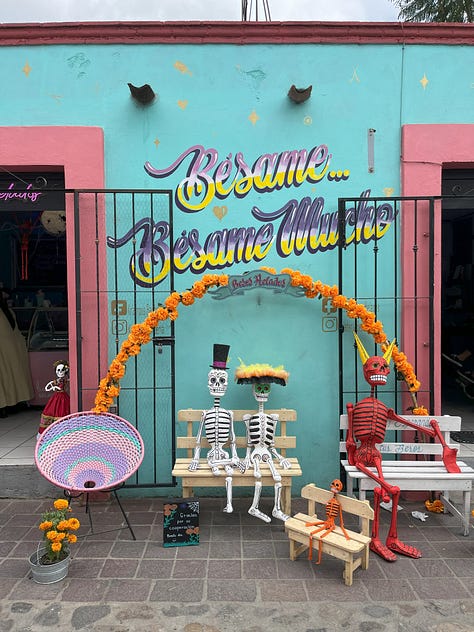
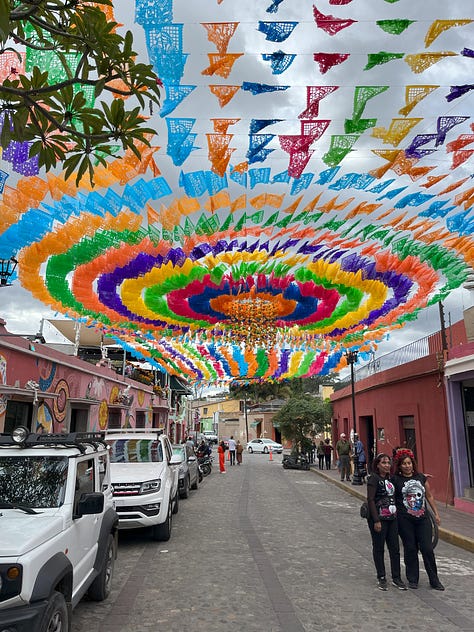
Day of the Dead is characterized by joy more than grief, partying more than crying, community more than isolation—and it was exactly the inspiration I needed to process my dad’s passing.
It also made me reflect on social health. Being socially healthy includes cultivating relationships with family and friends—but what about when one of them dies? You can still feel connected to someone, and your relationship with them can still be meaningful to you, long after they are gone.
Being socially healthy also includes belonging to a group or community—but what about when that is an intangible sense of common humanity or spirituality? Whatever you believe happens after, death is a reminder of the finiteness of our human existence and how fortunate we are to live each day and love each other.
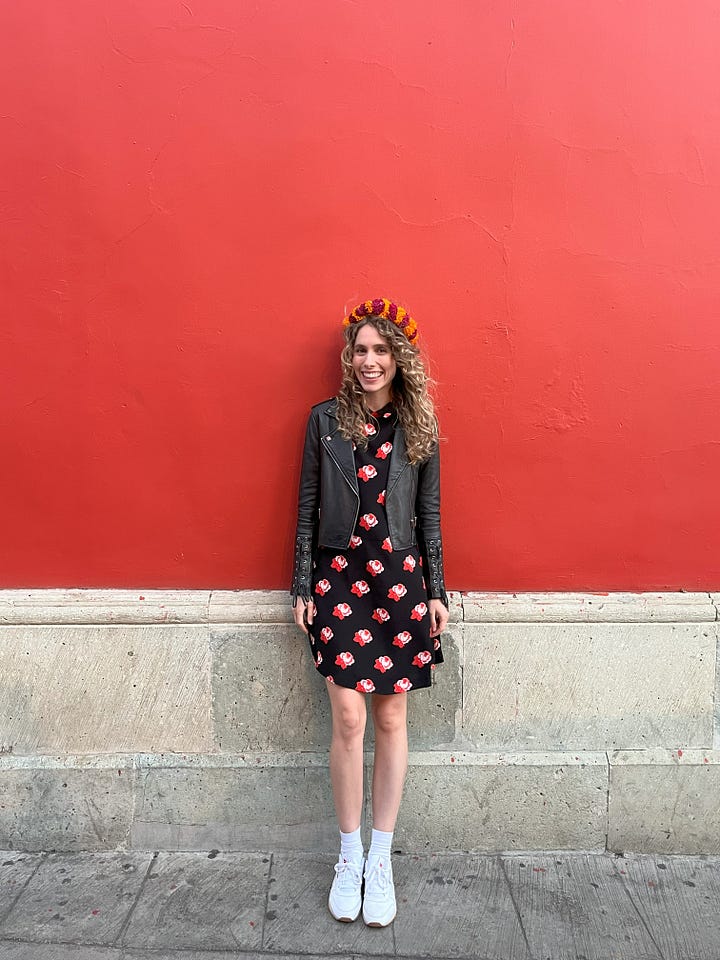

Fast forward a year later, my husband and I are celebrating Day of the Dead at home this week. We set up an altar with mementos from our time in Oaxaca and photos of people who have died, including my dad. Last night, we lit candles and reminisced. I’m excited to continue this tradition each year.
Tonight, I invite you to take out a photo of a loved one who has passed away. Then reflect: What quality did you admire most in that person? What’s one memory with them that makes you smile? Share your answers with a family member or friend as a way to connect—both with the dead and with the living.

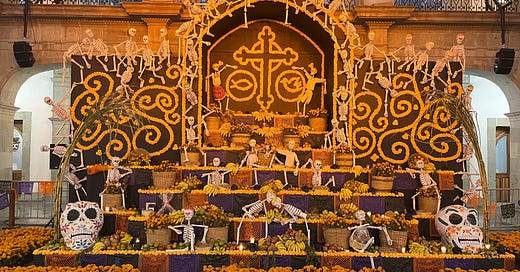



I love this. Thank you for sharing. My folks, now gone, are the reason I set up Myfolks. I am actually going to an awards event on 14th and I just decided today that I am going to take a picture of them for the table on the night. It will help me tell their story. So sorry for your loss, but I am certain your dad would be very proud of the important work you're doing.
Thank you for sharing with beautiful vulnerability and grace - I loved this read as it intersects all my favourite topics - connection, end of life, travel, rituals